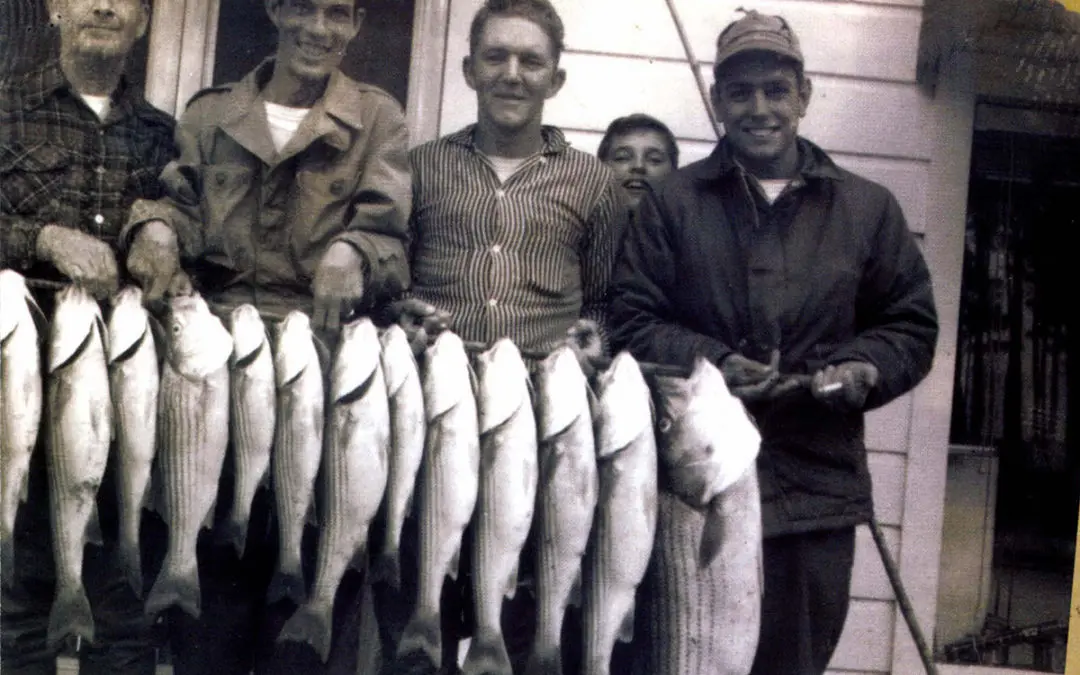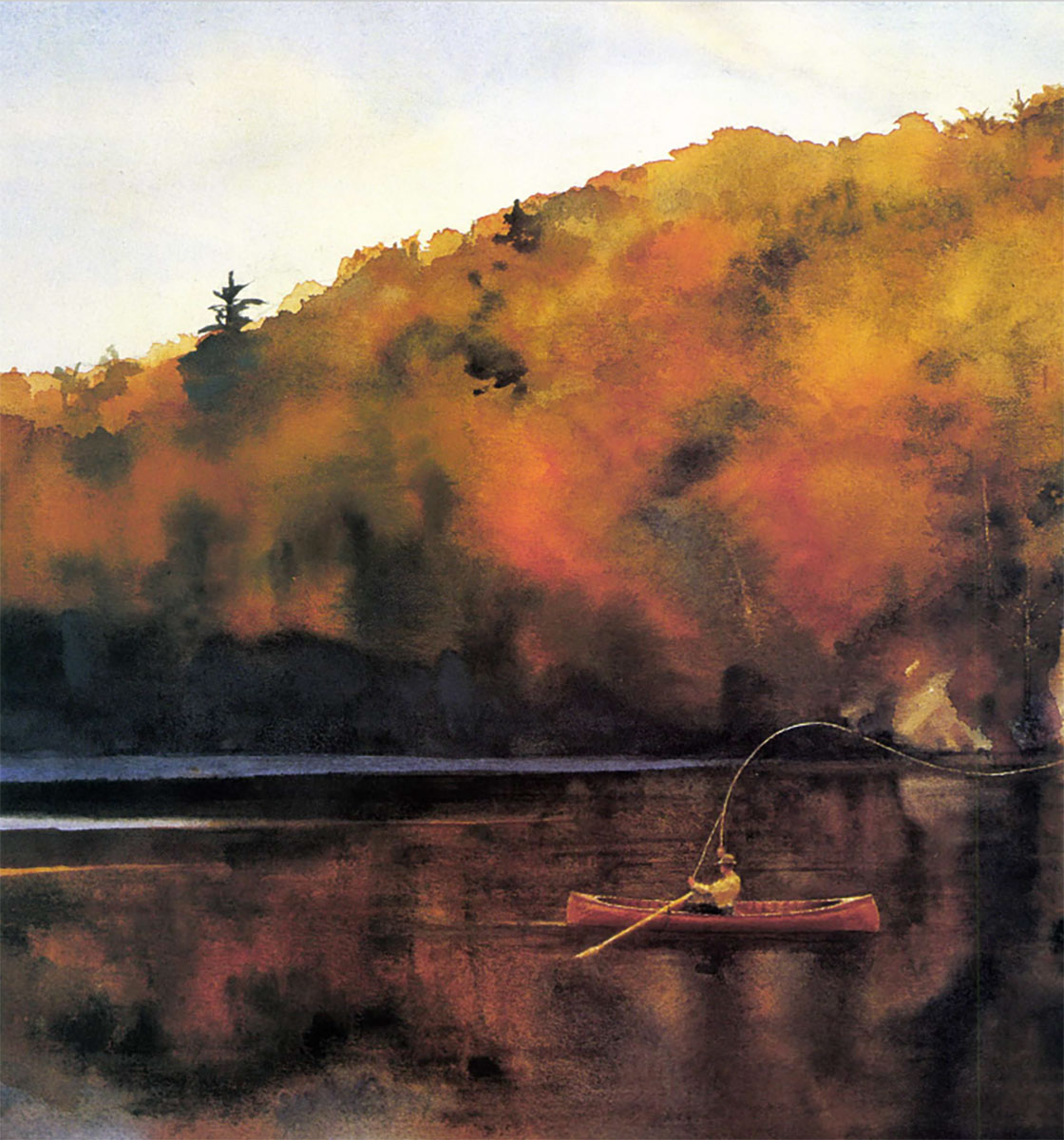The success of striped bass in our freshwater reservoirs represents one of the great modern-day stories of nature’s ability to adapt.
We got skunked that day, yet it remains one of my most vivid fishing memories.
It was a warm spring morning in 1963. My dad had loaded the Cumby-green Rambler with some fishing gear, a few snacks, then drove us from our home in Columbia, South Carolina, to Pack’s Landing on upper Lake Marion some 50 miles southeast toward Charleston. There he rented a small boat with a 6-horsepower gas outboard. The whole rig cost him $5, as I recall.
We putted out to the middle of the lake and anchored over the main channel. One of Dad’s friends had told him to fish upstream from an old railroad bridge near the landing. We did as suggested.
Dad had bought some cut shad, which he attached to a couple of mighty big hooks with two-ounce pyramids. He tossed them out and we waited.
I held the rod extra tight, having just gaped at the 30-pound striped bass mounted on the wall at Pack’s. And having seen the picture of race car driver Tiny Lund and his 55-pounder he’d caught the year before, I was prepared for the fight of my life.
To add fuel to the flames of my youthful imagination, an old guy at the landing told me, just a dumbass 11-year old, that another dumbass 11-year old had been jerked clean out of the boat and his body was never recovered. Gators no doubt had cleaned up the remains he assured me.
My dad winked at the fellow, then promised that he’d catch me before I went overboard. That was good enough.
After four hours, anticipation had turned to boredom, and my dad was starting to pull up anchor. Before we cranked the motor, one of Dad’s buddies pulled up in his boat to show off his 25-pounder. I reached across to touch the beautiful fish, which was busy gasping its last breaths. It was the biggest fish I’d ever seen up close. Three feet of fish with black, perfectly parallel stripes from throat to tail. I left the lake totally fixated by a fish I had yet to catch.
While the tale of the boy who drowned was of course make-believe, the story of giant striped bass is a fact. In 1933 most rural South Carolinians lived without electricity. As a result of the Rural Electrification Act of 1935, a hydroelectric dam was constructed in the South Carolina Lowcountry between Columbia and Charleston. More than 160,000 wild acres of forest and farmland disappeared beneath the waters of lakes Marion and Moultrie.
Also, lurking beneath the surface were great schools of anadromous striped bass migrating from the brackish estuaries along the Atlantic to spawn in the Santee River system. With the new locks in place near the small town of Moncks Corner, there would be no return to the salt.
State biologists thought surely the fish needed the saltwater to survive. After all, it was a natural migration they’d made for eons. Most experts expected the worst, assuming the stripers would suffer a slow die-off.
Not only did morone saxatilis survive, but the fish actually flourished in fresh water, continuing to spawn in the tributaries that rolled down from the higher country of the Midlands. It’s one of the great modern-day stories of nature’s ability to adapt.
As more of these whoppers were boated in Moultrie and Marion, the people living nearby saw dollar signs, and guides, camps and landings began popping up along the shorelines. Lured by photos of 40-pound stripers, and stories of broken rods and 25-pound-test line snapped like thread, anglers arrived from across the country to give it a go. A lucrative tourist attraction had surfaced.
Because of the striper’s successful spawning, the state’s fish and wildlife department began a massive hatchery program and distributed fingerlings to other bodies of water within the state. While most lakes did not offer the conditions necessary for spawning, the stripers nevertheless proved they could get along, much to the dismay of shad, herring and other smaller fish sharing these impoundments.
As word spread in the early 1960s about the availability of the striper fingerlings, other fish and wildlife departments began making requests. One of the first was Arkansas, which offered a trade – stripers for blue catfish. That’s worked out for both states, with a record 109.4-pound cat caught in the Santee-Cooper and a record 64 1/2-pound striper pulled from Beaver Lake in Arkansas.
Today, the progeny of the South Carolina land-locked striped bass can be found in 36 states – as far away as Nevada and California. Not to mention a few foreign countries.
For anglers, one of the great things about the freshwater striper is its willingness to eat most anything that will fit into its mouth. And that can be a pretty large opening. Live or cut shad and blue-backed herring are popular baits. So are white, yellow or chartreuse bucktails and spoons. If they’re schooling near the surface, a “striper swiper” or other noisy popping plug can be irresistible.
Depending on the time of year, they could be upstream, in the shallows or holding down deep. But if you can find them, there’s a good chance they’re hungry.

Taylor Kuykendall, Miss Clarendon County Rice Festival, hefts a big striped bass from Lake Hartwell in South Carolina.
I’ve caught my share of stripers, with an 18-pounder my largest. I caught it on a live shad in Lake Murray near Columbia. She burned up the gears in my little Zebco, so I had to pull her up by hand. Another very vivid striper memory.
Perhaps the most fun I’ve had with striped bass was catching schoolies on a chartreuse Clouser minnow. While the fish were just one- to two-pounders, they were a hoot on a 5-weight fly rod.
But certainly the possibility of tying into a monster striper – maybe even a world record – is what keeps a lot of folks on the water. That 70-plus pounder is out there…somewhere. Probably feeling a bit peckish too.
A fellow who’s caught some big stripers is Rich King of South Carolina.
“To have a forty-pounder on your line is something you’ll never forget,” says King, producer of Land-Locked: The Story of the Freshwater Striped Bass. “That’s why I go after them every chance I get. I only fish for the big ones now. I’m lucky to live close to a lake that has the potential for producing a record fish.”
King says that striper fishing generates millions of dollars in revenue for the state each year.
“It’s one of America’s greatest fighting fish, and it all started seventy years ago, right here in South Carolina.”
If stripers are in a lake or river near you, put catching one on your list of things to do. Even if you don’t hang a 40-pounder, the little ones are delicious!
From proverbs to professional tips to general words of insight, this collection of angling wisdom is the go-to guide for anyone who loves some aspect of the wonderful world of fishing. Buy Now





